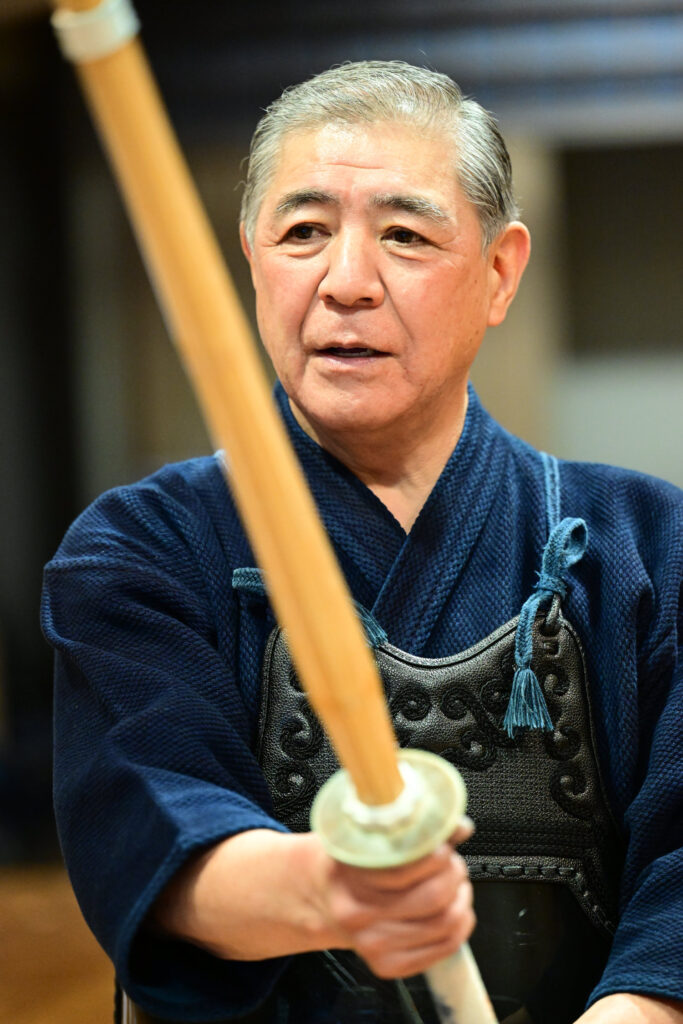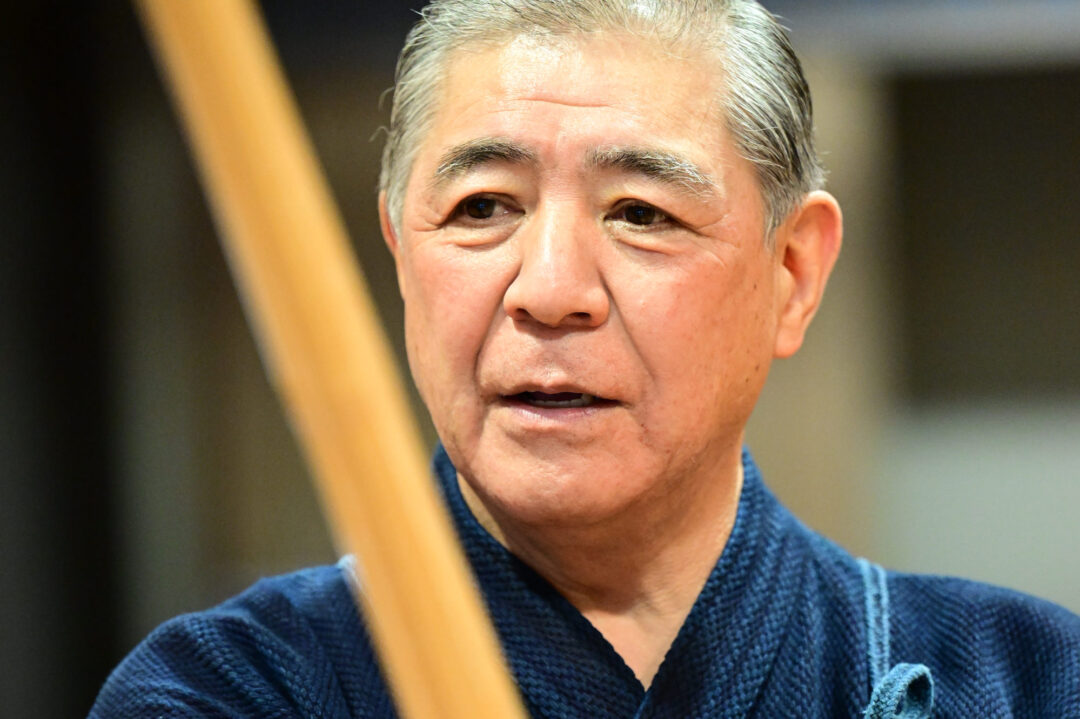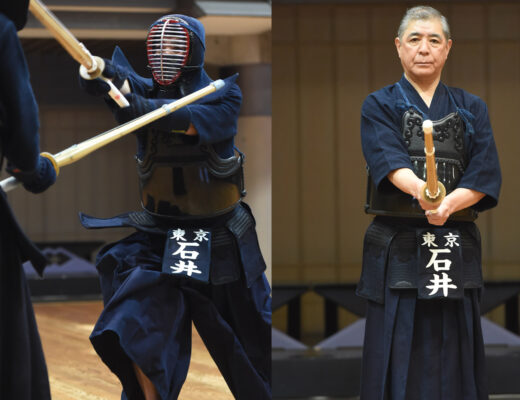2023.1 KENDOJIDAI
Photography: Nishiguchi Kunihiko
Translation: Jouke van der Woude
Sword techniques, physical techniques, and mental techniques.
Kendo emphasizes these three principles.
To be mindful of sword techniques, one must value the effectiveness of the Hasuji (blade angle) and the Shinogi (ridges across the sides of the Katana). Let’s consider this in training methods to acquire a higher level of Kendo.

In the Kendo classes at the Tokyo Budokan, currently instructed by Ishii Takeshi, the use of Habiki (replica Katana) is employed for practicing Kata.
By using Habiki during Kata practice, it becomes easier to comprehend the structure of the Katana. Understanding the key elements of the characteristics of the sword, such as the Shinogi and Sori (curvature), as well as the Hasuji, allows one to acquire versatile control, thereby expanding the scope of Kendo.
We inquired about the key points of understanding the Shinogi and Hasuji from Ishii Sensei, who emphasized the necessity of knowing the Katana in order to comprehend these aspects.
Using a Katana to comprehend Shinogi and Hasuji
Kendo is a martial art that involves engaging in combat and striking opportune moments using a Shinai. However, its origins lie in sword-to-sword duels. Actions such as applying Seme, Kaeshi-, and Suriage-techniques are closely related to the Hasuji and Shinogi. By holding a Katana in your hand and feeling its length and weight, you can come to understand its Sori, Hasuji and Shinogi.
Currently, I teach Kendo classes twice a month at the Tokyo Budokan. In these classes, I provide 15 pairs of different-sized Katana for free, allowing students to practice the Nihon Kendo Kata. For smaller individuals, it can be challenging to become accustomed to the actions of drawing and sheathing the sword. Without proper attention, there is a risk of accidentally cutting oneself. However, practicing with these Katana creates a sense of tension, and subsequently, when transitioning to Shinai practice, students naturally straighten their posture and can engage in productive Keiko.

There is also a teaching that says, “Handle the Shinai sword as if it were a Katana.” However, not many people possess an actual Katana. As a result, Bokuto are often used as substitutes. Although Bokuto have different thicknesses and weights compared to real Katana, I believe they still provide an understanding of the Hasuji, Shinogi, and Sori.
Currently, the “Training Method for Fundamental Kendo Techniques with a Bokuto” is incorporated into Kyu examinations, so even elementary school students are using a Bokuto and I think this is a very positive development. In my local youth instruction, I also teach the “Training Method for Fundamental Kendo Techniques with a Bokuto” while explaining that Tsuki techniques are prohibited in Keiko and Shiai until students reach high school.
Within the priorities of the All Japan Kendo Federation, efforts are being made to enhance the teaching methods of Nihon Kendo Kata, “Training Method for Fundamental Kendo Techniques with a Bokuto” and “Kendo Training Method with a Shinai” while recognizing their interconnectedness.
The Nihon Kendo Kata is the foundation of Kendo training methods
It aims to impart the principles of swordsmanship, the harmony of offense and defense, and the norms of etiquette based on the concept of the Katana.
The Training Method for Fundamental Kendo Techniques with a Bokuto serves as a bridge between Nihon Kendo Kata and Shinai Keiko.
- By using Bokuto, it helps students understand the principles and harmony of swordsmanship, as well as the norms of etiquette.
- Using Bokuto, it ensures proper mastery of the fundamental techniques and interpersonal skills of Kendo training with bamboo swords.
Shinai Keiko pursues a brilliant Ippon achieved through the refinement of the principles of the Katana and Kikentai-ichi
Using Shinai, it aims to pursue the achievement of a brilliant Ippon with Kikentai-ichi perfectly aligned, by striking the actual target areas while wearing Kendo equipment.
It is crucial to understand the purpose of each Keiko method and strive to comprehend it thoroughly.
Hasuji and Shinogi in the Nihon Kendo Kata
The rest of this article is only available for Kendo Jidai International subscribers!



